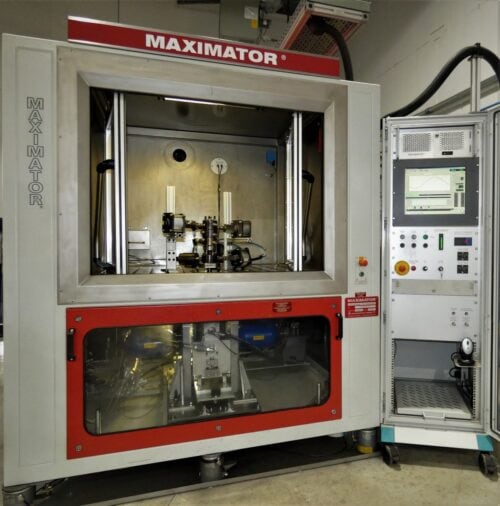Pressure Fatigue/Impulse Testing – Up To 65,000 psi @ 15Hz
Pressure Fatigue Testing, also known as Impulse or Cyclic Load Testing, is a form of destructive testing where a test component is subjected to a pressure load defined by two primary pressure points. With customer-defined parameters, we can replicate what the test component will experience in a real-world setting. The purpose of Pressure Fatigue Testing is to determine when and where the test component will fail over a period of time at operating pressure or determine if the component will survive beyond infinite life of the system where it is installed.
Pressure Fatigue/Impulse Testing Explained:
Pressure Fatigue Testing (aka Impulse Testing or Cyclic Load Testing) is a form of typically destructive testing where a test component is subjected to a pressure load defined by two primary pressure points. The test sequence will begin at the minimum pressure setpoint (2068 bar per the diagram below), reach the maximum pressure setpoint (4180 bar per the diagram below) and then complete the test sequence by lowering the pressure back to the minimum setpoint. Once the component has been subjected to this pressure load sequence one time, we would consider this “1 test cycle”. The waveform below is a Sinusoidal Waveform applied at a frequency of 1 Hertz (Hz). One test per second.
These pressures are defined by the customer and are supposed to replicate what the test component will feel in a real-world setting. The purpose of Fatigue Testing is to determine when and where the component will fail over a long period of time at operating pressure or if the component will survive beyond infinite life of the system where it is installed. Fatigue tested components do not need to burst or leak to pass a test criterion, but they should never be used in the field by a customer.
You could theoretically perform a similar test using a hydrostatic test cart, but if a customer needs to reach 10,000,000 pressure loads (test cycles), the technician would be retired before reaching 1,000,000 cycles. It would take decades.
The benefit of our Impulse/Fatigue Bench (PN258), outside of the 65,000 psi pressure capability, is the ability to apply these test cycles at a rate as slow as 0.2Hz (.2 cycles per second) and as fast as 15Hz (15 cycles per second). This means, assuming we operate at 15Hz, we can apply 10,000,000 test cycles to a component in 185 hours or just under 8 days.
When most people think of Fatigue Testing or Cyclic Load Testing, they think of a sinusoidal waveform, like above. The component just needs to be subjected to the minimum/maximum setpoints and there is not a clearly defined hold time or dwell period at the maximum pressure. However, some customers do require a dwell period at the maximum pressure. This is where a Trapezoidal Waveform (see below) comes into play.
The key component in a trapezoidal fatigue test is sustaining that maximum setpoint over a period of time. As we can still operate at 15Hz using this waveform, these dwell periods can be quite short (only approximately 60ms in the above diagram) but again all are defined by customer specification.




